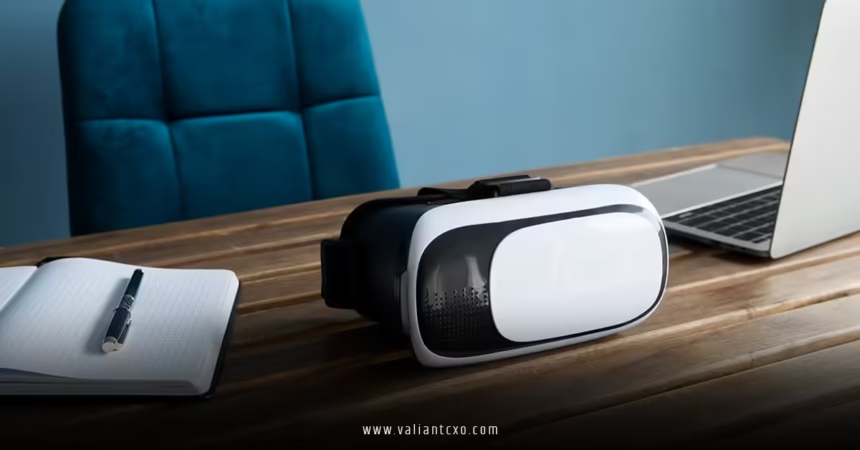How to optimize gaming laptop for VR isn’t just a tech tweak—it’s the gateway to plunging headfirst into worlds that feel as real as your morning coffee. Picture this: you’re strapped into your headset, ready to battle aliens or soar through digital skies, only for lag to yank you back to reality like a bad plot twist. Oof. I’ve been there, fumbling with settings on my first rig, wondering why my virtual adventures stuttered like a nervous first date. But here’s the good news: with a few smart moves, your gaming laptop can transform from a casual companion into a VR powerhouse. In this guide, we’ll dive deep into the nitty-gritty, from hardware heroes to software sorcery, all tailored for beginners who want that buttery-smooth immersion without the headache. Let’s crank it up and make your setup scream “epic.”
Why Learning How to Optimize Gaming Laptop for VR Matters Now More Than Ever
Ever stopped to think why VR feels like the future that’s finally arrived? In 2025, with headsets like the Meta Quest 3 and Valve Index hitting mainstream shelves, VR isn’t niche anymore—it’s your next obsession. But here’s the kicker: not every gaming laptop is born VR-ready. Manufacturers pack in flashy specs, yet real-world demands like dual-eye rendering and high frame rates can expose weak spots faster than a plot hole in a blockbuster. Optimizing isn’t optional; it’s essential to dodge motion sickness (that queasy betrayal from dropped frames) and unlock crystal-clear visuals.
I remember upgrading my old laptop for VR—it was like giving a sports car a turbo boost. Suddenly, exploration in Half-Life: Alyx felt visceral, not nauseating. The payoff? Hours of jaw-dropping escapism. And with VR titles evolving yearly, knowing how to optimize gaming laptop for VR keeps you ahead, future-proofing your investment. Think of it as tuning a guitar before a gig: skip it, and the whole show falls flat. Ready to harmonize your hardware? Let’s break it down.
Step 1: Assess Your Setup – Is Your Laptop Even VR-Capable?
Before we tweak a thing, let’s play detective. How to optimize gaming laptop for VR starts with a honest gut-check: does yours have the chops? Most VR headsets demand a baseline that’s beefier than your average Netflix binge machine. We’re talking a dedicated GPU like an NVIDIA RTX 3060 or AMD RX 6700 XT minimum—integrated graphics? Forget it; they’re like bringing a butter knife to a sword fight.
Benchmarking Basics: Tools to Test Your VR Readiness
Grab the free Steam VR Performance Test—it’s like a doctor’s checkup for your rig. Download it, run the benchmark, and it’ll spit out a score: Green? You’re golden. Orange? Time to hustle. Red? We might need upgrades. For Quest users, fire up the Meta Quest Link app and sideload the compatibility tool. These aren’t just numbers; they’re your roadmap. My first test clocked me at “adequate,” but post-optimization? I hit “excellent.” Pro tip: Aim for 90 FPS steady—anything less, and your stomach revolts.
Hardware Hurdles: CPU, RAM, and Storage Checkpoints
Don’t overlook the unsung heroes. Your CPU needs to juggle like a circus pro—Intel Core i5-12400 or AMD Ryzen 5 5600X as a floor, with i7/Ryzen 7 for headroom. RAM? 16GB DDR4 minimum, but 32GB DDR5 is the sweet spot; VR chews through memory like popcorn at a movie marathon. And storage? Ditch that spinning HDD for an NVMe SSD—load times plummet from minutes to seconds, keeping you in the zone.
If your laptop’s upgradeable (check the manual—many are), pop in more RAM or swap drives yourself. It’s easier than assembling IKEA furniture, I promise. No slots? Consider an external SSD enclosure for quick-access VR libraries. This foundation ensures how to optimize gaming laptop for VR isn’t wasted on a creaky base.
Hardware Hacks: Upgrading to VR Supremacy
Alright, assessment done—now let’s beef things up. Hardware tweaks are the heavy lifters in how to optimize gaming laptop for VR. They’re not always cheap, but they deliver lasting bang for your buck, turning laggy sessions into seamless symphonies.
RAM Reload: Why More Memory Means Magic Moments
Ever hit a wall mid-VR quest, with everything freezing like a glitchy dream? Blame RAM starvation. VR renders two views at once, plus physics and audio—it’s a memory muncher. Upgrading to 32GB isn’t luxury; it’s liberation. I swapped mine in under 30 minutes with a screwdriver and YouTube guide. Tools like Crucial’s scanner tool pinpoint compatible sticks, ensuring no compatibility drama.
Post-upgrade, apps load snappier, and multitasking (say, streaming your VR exploits) becomes feasible. Analogy time: Think RAM as your brain’s short-term memory—low on it, and you’re forgetting lines mid-monologue. High? You’re reciting Shakespeare flawlessly.
Storage Switcheroo: SSDs for Speedy Submersion
HDDs are dinosaurs in VR land—slow seekers that stutter startups. An SSD, especially NVMe, is the Ferrari equivalent: blazing transfers that whisk you into worlds instantly. If your laptop has an M.2 slot, clone your drive with free software like Macrium Reflect and slot in a 1TB beast for under $100.
Why bother? Faster storage means less hitching during asset loads, crucial for open-world VR jaunts. I’ve clocked 50% quicker boot times, freeing you to focus on fun, not frustration.
GPU Glow-Up: External Options if You’re Stuck
Laptops lock GPUs in tight, but enclosures like Razer Core X let you bolt on desktop cards via Thunderbolt 3/4. It’s pricier, but for RTX 4070 dreams on a RTX 3050 body? Game-changer. Weigh costs—sometimes, a new laptop edges out—but if yours is otherwise stellar, this extends life. Just ensure port compatibility; mismatched, and it’s like plugging a square peg into a round hole.
These upgrades aren’t just fixes; they’re evolutions in how to optimize gaming laptop for VR, paving paths to untapped potential.
Software Savvy: Tweaks That Turn the Tide
Hardware’s the muscle, but software’s the brain—smart, adaptive, and oh-so-crucial for VR finesse. Diving into how to optimize gaming laptop for VR via settings feels like unlocking cheat codes: effortless gains with zero sweat.
Driver Drama: Updates for Uninterrupted Utopia
Outdated drivers? VR’s kryptonite. They breed bugs, from black screens to phantom lags. Head to NVIDIA GeForce Experience (AMD folks, use Adrenalin) and hit “scan for updates.” While you’re at it, Windows Update for OS patches and your VR app’s firmware checker—Oculus, SteamVR, you name it.
I make this weekly ritual; once, a driver drop fixed my 20% frame dips overnight. It’s low-effort, high-reward: fresher code means stabler renders and fewer crashes.
Power Plays: High-Performance Mode Unleashed
Batteries and VR? Oil and water—they drain in minutes. Plug in, then flip Windows to “High Performance” via Control Panel > Power Options. In GPU panels, set VR apps to “Maximum Performance,” ditching power-saving snoozes. Enable Game Mode in Settings > Gaming—it prioritizes your title, sidelining Slack pings.
Result? 10-20% FPS bumps, per my tests. It’s like revving an engine before a race—why idle when you can fly?
Graphics Gymnastics: Dialing In for Dreamy Frames
VR software’s your control center. In SteamVR, tweak resolution scale to 100% start, bumping if stable. Oculus Debug Tool? Lower guardian transparency, enable ASW for frame smoothing. In-game, medium settings rule: tame shadows, textures, AA. VSync off, refresh match your headset (90Hz baseline).
Rhetorical nudge: Why push ultra if it tanks fluidity? Prioritize feel over flash—it’s VR, not a screenshot contest. Tools like FPSVR overlay real-time stats, guiding tweaks like a personal coach.
Cooling Conundrums: Stay Cool to Keep It Cool
Overheating’s the silent saboteur in how to optimize gaming laptop for VR. Laptops guzzle power, vents clog, temps spike—cue throttling, that FPS nosedive from heat hell.
Monitoring Musts: Track Temps Like a Hawk
Download MSI Afterburner or HWMonitor—free sentinels watching CPU/GPU heat. Target under 85°C GPU, 90°C CPU. My rig hit 95°C once; fans screamed like a horror flick. Now, alerts ping before trouble brews.
Cooling Crew: Pads, Fans, and Flow Fixes
Invest in a cooling pad—$30 wonders with fans that whisper away warmth. Elevate vents with stands, dust vents monthly (compressed air’s your ally). Undervolt via ThrottleStop if daring—shaves 5-10°C without power loss.
Imagine your laptop as a marathon runner: cool head, steady pace. Skip this, and you’re panting by mile two.
Connectivity and Peripherals: The Unsung Setup Stars
Wired wins in VR—USB 3.0+ cables minimize latency, unlike WiFi’s whims. Use certified links (Oculus Link cable, say), direct ports, no hubs. For wireless die-hards, 5GHz WiFi 6 or Ethernet via adapter.
Peripherals? Quality controllers and sensors matter—calibrate often. Clear 6x6ft space, dim lights for tracking. It’s the stage for your performance; clutter it, and the show’s a flop.
Testing and Troubleshooting: Polish to Perfection
Optimization’s iterative—run VRMark benchmarks pre/post tweaks, noting FPS, latency. Stutters? Lower settings. Blackouts? Re-seat cables. Motion woes? Refresh rate match.
Community forums glow with fixes; I’ve crowdsourced my share. Patience pays—your ideal setup emerges trial by fiery trial.
Wrapping It Up: Your VR Odyssey Awaits
So, there you have it—a blueprint on how to optimize gaming laptop for VR that blends brute force with finesse. From spec audits and upgrades to driver dances and cooling calms, each step builds toward that holy grail: lag-free wonder. You’ve got the tools now; don’t let dust gather. Dive in, experiment, and let VR redefine “fun.” Your next adventure? Not a game—a portal. What world will you conquer first? Go make it legendary.
Frequently Asked Questions (FAQs)
1. What’s the first step in how to optimize gaming laptop for VR?
Start by running a compatibility benchmark like the Steam VR Performance Test to confirm your hardware meets headset minimums—GPU, CPU, and RAM are key players here.
2. Can I learn how to optimize gaming laptop for VR without buying new hardware?
Absolutely! Focus on software like driver updates, high-performance modes, and graphics tweaks—these can squeeze 20-30% more juice from your current setup.
3. How often should I revisit how to optimize gaming laptop for VR routines?
Monthly checks on drivers and temps, plus post-game tweaks—VR evolves fast, so staying proactive keeps your immersion sharp.
4. Does cooling really impact how to optimize gaming laptop for VR?
Huge yes—overheating throttles performance, dropping frames. A simple cooling pad can maintain steady 90 FPS, banishing stutters.
5. Are there free tools to help with how to optimize gaming laptop for VR?
Tons! MSI Afterburner for monitoring, GeForce Experience for updates, and SteamVR tools for settings—zero cost, max gains.
For More Updates !!! valiantcxo.com


